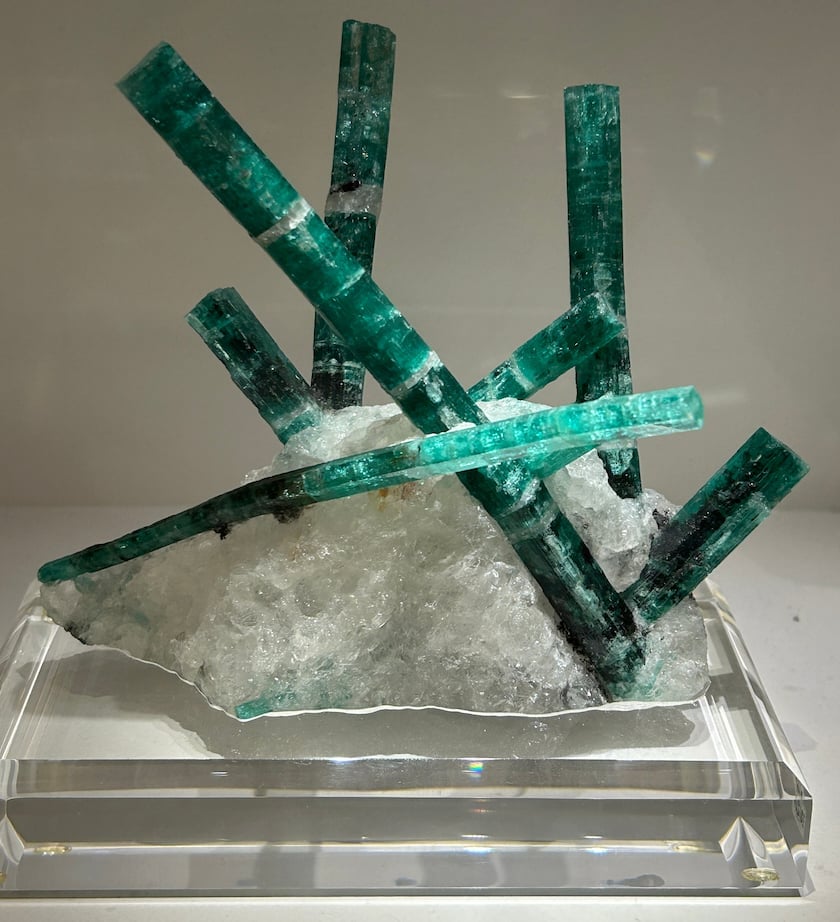Mineralogy of Cyclosilicates and Inosilicates
The silicate subgroups of cyclosilicates and inosilicates include beryl, tourmaline, jadeite, and nephrite. Learn to identify these minerals.
18 Minute Read
Crystal Chemistry of Cyclosilicates and Inosilicates
Cyclosilicates and inosilicates are two subclasses of silicate minerals. They include numerous mineral groups and important mineral species. The cyclosilicates most familiar to gemologists are beryls and the tourmaline supergroup. Inosilicates are subdivided into single-chain silicates, which includes the pyroxene supergroup, and double-chain silicates, which includes the amphibole minerals. The gem material gemologists call jade actually includes both pyroxene (jadeite) and amphibole (nephrite) members.
Introduction to Cyclosilicates
Cyclosilicate units form by joining three, four, or six SiO4 tetrahedrons into closed rings.
- Three joined tetrahedrons create a three-member ring with a [Si3O9]6- structural unit.
- Four joined tetrahedrons create a four-member ring with a [Si4O12]8- structural unit.
- Six joined tetrahedrons create a six-member ring with a [Si6O18]12- structural unit. Six-member rings are the most common type of cyclosilicates.
Benitoite (BaTi[Si3O9]), the rare state gem of California, is an example of a
…Olena Rybnikova, PhD
Olena Rybnikova is a gemologist and mineralogist. She has a PhD in mineralogy and petrology specializing in beryllium minerals and is a certified Applied Jewelry Professional accredited by the Gemological Institute of America. Her passion is actively promoting knowledge and appreciation of nature, geology, and gemstones.
Related Articles
Mineralogy of Phyllosilicates and Tectosilicates
Mineralogy of Silicates: Nesosilicates and Sorosilicates
Mineralogy of Oxides and Hydroxides
Introduction to Native Elements
Latest Articles
800 Years of Mogok: A Celebration in Tenuous Times
What is the Average Gemstone Faceting Yield?
Pyroxmangite Value, Price, and Jewelry Information
How to Identify Emerald Simulants and Synthetics
Never Stop Learning
When you join the IGS community, you get trusted diamond & gemstone information when you need it.
Get Gemology Insights
Get started with the International Gem Society’s free guide to gemstone identification. Join our weekly newsletter & get a free copy of the Gem ID Checklist!
